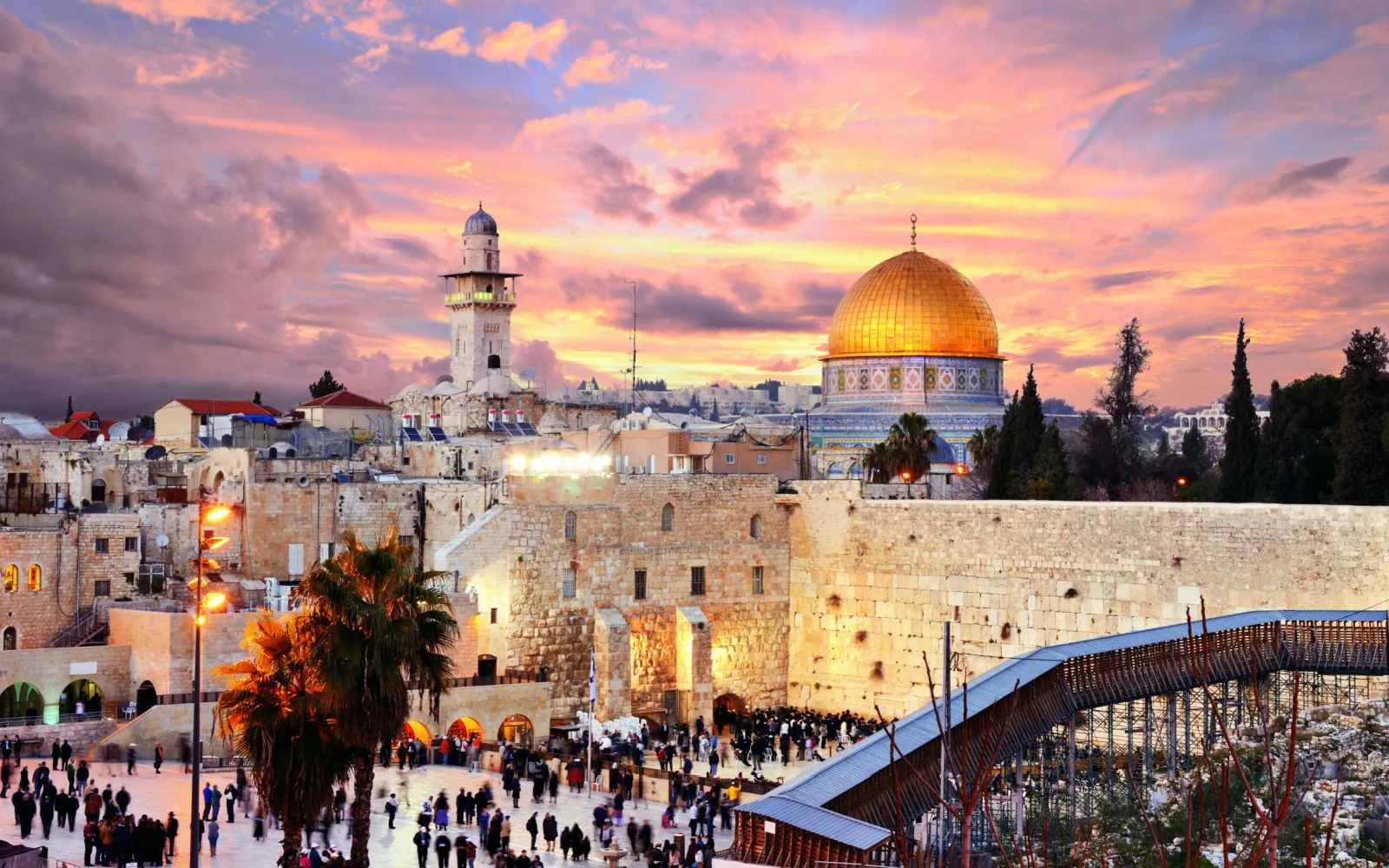Israel attracts tourists from all over, thanks to the country’s rich tapestry of history, culture, and diverse landscapes. From the ancient sites in and around Jerusalem to the modern features of Tel Aviv, there’s plenty to enjoy.
But it helps to go during the right time of the year. If you want to make the most of your trip, check out our recommendations for choosing the best time to visit Israel.
The Overall Best Time to Visit Israel
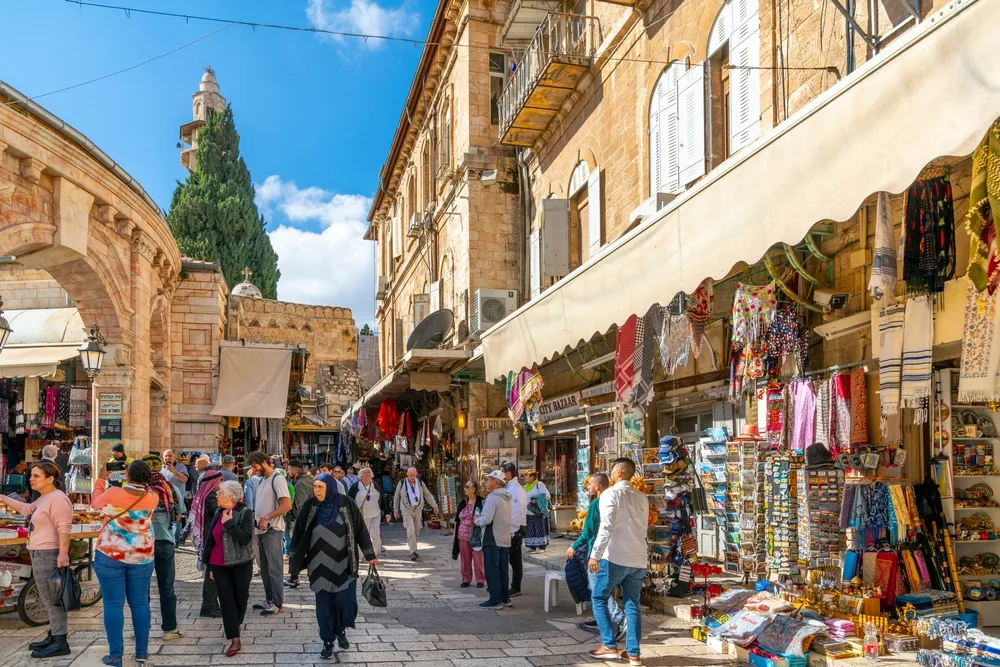
Jerusalem, Israel – November 18 2022: Local Israelis and tourists walk in a crowded alley of shops and markets at the Old City Muristan Market in the ancient and medieval city of Jerusalem, Israel/Kirk Fisher/Shutterstock
The best overall time to visit Israel is typically during the spring or fall. The weather is typically mild and pleasant during these seasons, which is great for sightseeing and enjoying outdoor activities.
Spring, which lasts from April to June, is particularly considered a great time to visit the country. During the middle of the springtime, the weather is warm, but not excessively hot. You can expect temperatures of about 58 to 80 degrees Fahrenheit during the day.
The landscapes outside of the cities are also lush and colorful in the spring, with blooming flowers and fuller vegetation, so it’s a great time of the year to get out and explore the hiking trails and historic sites.
Some of the top tourist destinations in Israel include:
- The Old City in Jerusalem
- Masada
- Megiddo
- Old Jaffa
- Ein Gedi Nature Reserve
- Bahai Gardens
You’ll also likely want to visit the beaches and shops in Tel Aviv. Visiting in the spring gives you the perfect weather to check out these sites and other spots around the country.
The spring season also coincides with many religious celebrations, including Passover and Easter, which adds to the cultural richness of your visit. However, this is also one of the busiest times of the year. You may struggle to book a flight close to some of the biggest holidays.
It’s a good idea to book your plane tickets as far in advance as possible. Along with spring, many people visit Israel in the fall, which lasts from September to November.
As with visiting in the spring, early fall offers comfortable temperatures. In Jerusalem, the average temperature in October is about 77 degrees Fahrenheit. Of course, the temperature varies depending on where you stay, but it’s typically hotter in the south.
For example, Eilat in southern Israel sees temperatures in the upper 80s and low 90s in October. Choosing the best time to visit also depends on the activities that you’re looking forward to.
For example, the cooler temperatures of spring and fall aren’t ideal for spending time in the water. If you’re hoping to spend most of your time at the beach, the best time to visit is from June until August.
Visiting during the hottest time of the year ensures that the water will be warmer, but if you want to hike across parts of the country, you’ll likely prefer the cooler weather.
Cheapest Time to Visit Israel
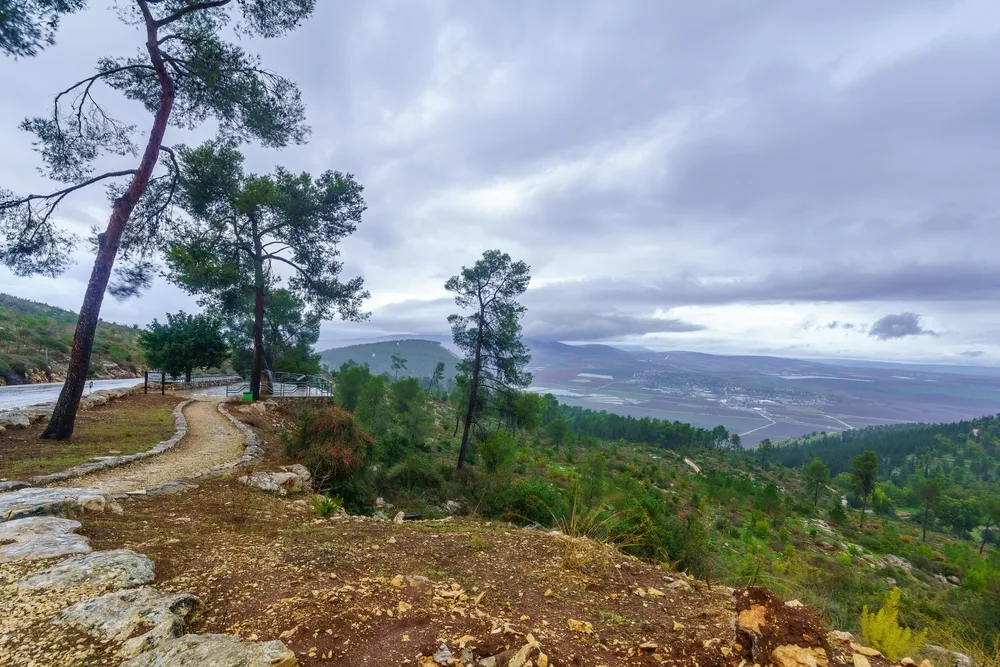
Gilboa, Israel – December 20, 2021: View of Hido observation point on the Gilboa ridge, on a winter day, and the Jezreel Valley Landscape, Northern Israel/Rndms/Shutterstock
The cheapest time to visit Israel is typically during the winter months, from November to February. Prices for accommodations and flights are often cheaper during the off-peak winter season. Most visitors prefer to visit during the warmer, drier months.
The cheapest flights are often found in January and February. If you want the best deals, it’s a good idea to shop around. You may also get a lower price by stopping over in a different country instead of booking a direct flight.
Stopping in Rome or another nearby country may save a significant amount. The winter months are less crowded and cheaper compared to visiting in the spring or fall, but you’ll also need to deal with colder temperatures and more rainfall.
The weather is a little more unpredictable, which may make it difficult to get out and see some of the sights. You’ll also find fewer hotels and services in the winter months, and some businesses close for the season.
Most parts of Israel remain cool and comfortable during the daytime throughout the winter, and you may find temperatures in the mid-70s in November.
However, temps can drop to the low 40s in the evening, so if you plan on hiking, pay close attention to the sunset to avoid staying out too late.
While winter is generally the cheapest time to visit the country, December is an exception. The Festival of Lights and many other major holidays and festivals occur throughout December, bringing more tourists and higher prices.
Least Busy Time to Visit Israel

Volkova Natalia/Shutterstock
The least busy times to visit Israel are in January, May, and September. January is cold and wet while May and September are part of the shoulder seasons.
The shoulder seasons include late spring and early fall. There are fewer tourists during these periods compared to the summer months and the winter holiday season. People are either just finishing up their holidays or getting ready for the next one.
You can avoid the rush that comes with the busier travel seasons. May is one of the least busy times, as it comes after the peak springtime travel, and average temperatures are still comfortable in most parts of the country during this time of the year.
In May, the average temperature in Tel Aviv is about 73 degrees Fahrenheit. The later shoulder season starts around September, after the hottest months of July and August, and visiting in September allows you to beat the fall crowds.
The Worst Time to Visit Israel

Jerusalem, Israel – 2023: Jerusalem light rail train tram in downtown, Jaffa road, Jerusalem, Israel. Night shot/Eliricon/Shutterstock
The peak summer months and periods around major holidays are typically considered the worst times to visit Israel. However, deciding on the worst time to visit Israel is subjective and depends on many factors, including individual preferences and priorities.
Temperatures can get very hot in the middle of summer, which may limit what you can do and how far you want to explore. The average temperature in Israel in July is about 84 to 86 degrees Fahrenheit.
The heat is likely to make some outdoor activities less enjoyable. You’re not going to want to hike around the Mount Bental Nature Reserve or any other hiking trail in 100-degree weather.
People typically visit the country in the spring or fall if they plan on spending a considerable amount of time outdoors. If you don’t like crowds, the periods around major holidays are also likely to be the worst times to plan your trip.
Passover, Sukkot, Rosh Hashanah, Yom Kippur, and Eid al-Fitr are just a few of the holidays that tend to bring bigger crowds or impact the availability of things to see and do. During certain holidays and events, certain attractions and services are closed or too crowded to fully enjoy.
Israel by Month: Climate & Activities
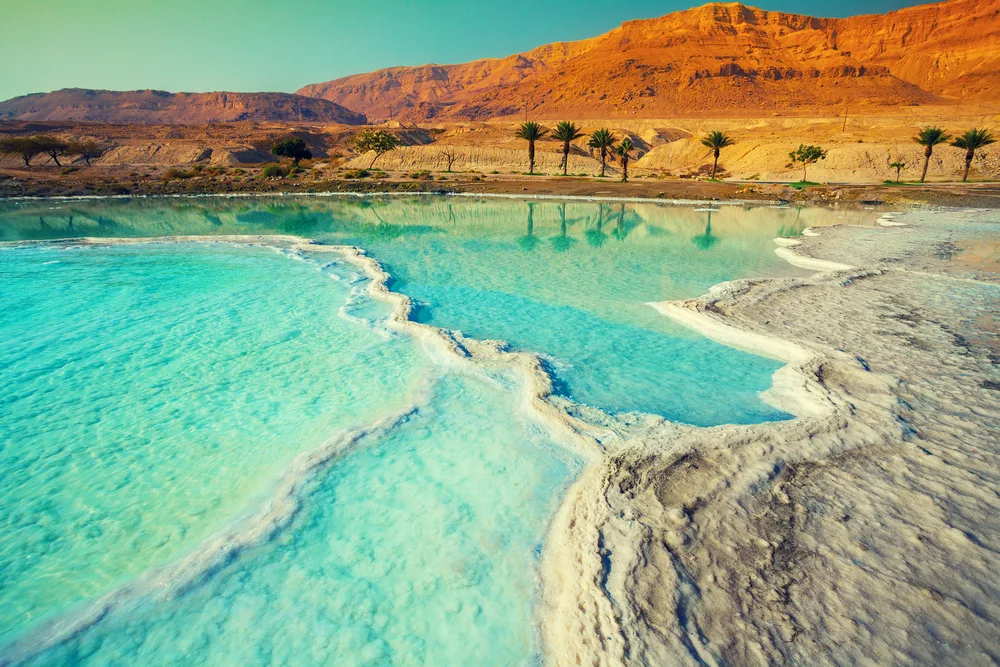
Vvvita/Shutterstock
Still unsure about the best time to visit Israel? Take a look at our summary of the weather and climate by month below:
January
Winter temperatures in Israel range from 6 to 17°C (43-63°F). January is an excellent time for exploring historical sites like Jerusalem’s Old City and the Dead Sea. Hiking in the Negev Desert is also popular.
February
Similar to January, February maintains cool temperatures between 7 to 18°C (45-64°F). Visitors can explore the ancient city of Akko (Acre), enjoy the vibrant street art scene in Tel Aviv, and hike in the Golan Heights.
March
As spring begins, temperatures range from 9 to 21°C (48-70°F). March is perfect for visiting the archaeological site of Masada, exploring the Bahá’í Gardens in Haifa, and attending the Purim celebrations.
April
Spring temperatures in Israel range from 11 to 24°C (52-75°F). It’s an ideal time for touring the vibrant markets of Jerusalem and Tel Aviv, hiking in the Ein Gedi Nature Reserve, and celebrating Passover.
May
May sees temperatures ranging from 15 to 28°C (59-82°F). It’s a great month for enjoying the beaches of Tel Aviv, exploring the ancient city of Caesarea, and visiting the artists’ colony in Safed.
June
Summer arrives with temperatures between 18 to 31°C (64-88°F). June offers opportunities for water activities in the Red Sea, exploring the archaeological site of Beit She’an, and hiking in the Carmel Mountains.
July
July maintains hot temperatures from 21 to 34°C (70-93°F). It’s a popular month for beach vacations in Eilat, exploring the ancient city of Jaffa, and attending cultural events like the Jerusalem Film Festival.
August
Temperatures in August range from 22 to 35°C (72-95°F). It’s an excellent time for floating in the Dead Sea, exploring the archaeological site of Megiddo, and attending music festivals like the Klezmer Festival in Safed.
September
As fall begins, temperatures range from 20 to 32°C (68-90°F). September offers a pleasant transition, with opportunities for visiting the Sea of Galilee, exploring the Judean Desert, and celebrating the Jewish New Year.
October
October sees temperatures ranging from 17 to 29°C (63-84°F). It’s a great month for hiking in the Ramon Crater, exploring the ancient city of Beersheba, and attending the Sukkot festivities.
November
Fall temperatures range from 12 to 23°C (54-73°F). November is perfect for touring the Yad Vashem Holocaust Memorial, hiking in the Galilee region, and exploring the vibrant street food scene.
December
Winter returns with temperatures ranging from 8 to 18°C (46-64°F). December brings opportunities for visiting the Church of the Nativity in Bethlehem, exploring the Ein Avdat National Park, and experiencing the festive atmosphere.
Frequently Asked Questions
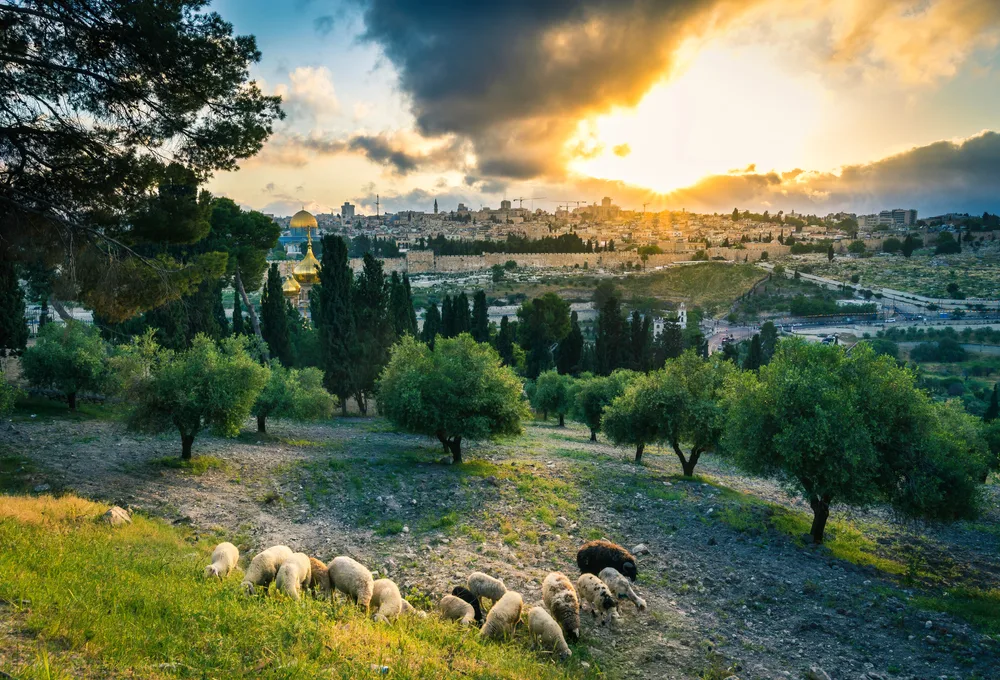
John Theodor/Shutterstock
If you still have a few questions about choosing the right time to visit Israel, perhaps the following FAQ can help:
What is the rainy month in Israel?
January is often the wettest month in Israel. It’s also one of the coldest, which is why fewer tourists tend to visit during the start of the year. The average temperature across the entire country for January is about 57 degrees Fahrenheit. At night, the temperatures can hover around freezing.
What is the hottest month in Israel?
August is typically the hottest month in Israel, but the temperature varies from north to south. The average temperature in Tel Aviv in August is 86 degrees Fahrenheit. However, in Eilat in the south, the average temperature is 104 degrees. In Haifa, the average temperature in August is 85 degrees.
Is Israel better in winter or summer?
Most tourists are likely to prefer the winter weather in Israel compared to the hot summer temperatures. In the winter, daytime temperatures may still reach the 60s in most parts of the country. You can still explore the outdoors during the day when visiting in the winter.
However, in the summer, temperatures may reach into the 90s. The weather can become dangerous when going on a long hike or spending most of the day outdoors, especially if you’re not prepared for the conditions.
What month does it get coldest in Israel?
January is typically the coldest month in Israel. The average temperature is 57 degrees Fahrenheit. However, in the south, such as in Eilat, you’re likely to enjoy pleasant temperatures around 60 to 70 degrees throughout the winter.
How many days in Israel is enough?
If you want to see most of the top attractions in Israel, you should plan to spend at least a week in the country. This gives you enough time to explore Haifa in the north before spending a day or two each in Tel Aviv, Jerusalem, and Eilat.
If you have the budget and time available, consider staying even longer to explore more of the country, including the nature reserves.
So, What’s the Best Time to Visit Israel?
Spring and fall are often the best times to visit Israel because you can avoid the heat of summer and the cooler temperatures of winter. March is a popular time to visit in the spring, as the weather is still cool, but warm enough for exploring the historic sites and natural attractions around the country.
Finally, July and August stand out as some of the worst times to visit due to the hot temperatures and higher prices, but offer lower prices on airfare and accommodations.
However, whenever you decide to visit Israel, you’ll discover a country rich in history, culture, and amazing things to see and do. Enjoy!



